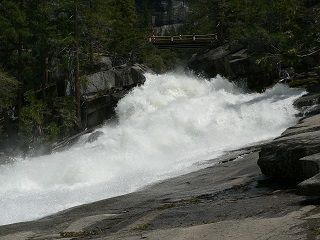From Guest Blogger Blake: Drones Have Environmentally Important Purposes Too

Academic Uses
Several schools, including Kansas State University and Cornell, are using drones to collect ecological/wildlife data. One of the best funded college drone programs in the United States is at the The University of Florida. They have their own research group that has spent over a decade building drones to take high-resolution wildlife photographs and videos (which could potentially, in and of itself, save the lives of wildlife biologists, as many die as a result of smaller aircrafts crashing. Some high schools throughout the U.S. are even making use of drones, like Grennon High School in Springfield Ohio has added a new course that is designed for exposing students to careers in modeling and simulation which includes creating and operating drones.
Hurricanes
We’ve seen hurricanes ravage major urban areas in recent years. In the future, however, drones may help local governments gauge the severity of a looming storm more quickly, and may actually expedite response efforts. Drones are capable of reaching high altitudes (some as high as 10.5 miles off the ground) and they are durable enough to fly directly right into storms. The National Oceanic and Atmospheric Administration (NOAA) and NASA have been working together on project that uses two high power drones to collect data about hurricanes.
Monitoring wildlife
Drones could become a valuable asset in monitoring wildlife. Aireware, a tech company from California, has been working with the Kenya-based Ol Pejecta Conservancy on a program which uses surveillance drones. The drones help park rangers to keep a watchful eye on wildlife, and it also helps them to identify areas where poaching is taking place. There is also the company Conservation Drones, which has been building its own drones to monitor wildlife in southeast Asia. The company is currently working on an ambitious conservation and research program which aims to improve conditions for Mongolian snow leopards.
Internet
While the internet is largely ubiquitous in the developed world, there are still communities throughout the world that still lack access. Drones might actually be helpful at bringing the internet to people in remote areas. Mark Zuckerberg of Facebook fame has been talking about using drones and satellite internet to transmit internet all over the world. Zuckerberg has even said that his systems will likely prove to be more successful than Google’s Loon program which uses hot-air balloons to transmit internet, because, as he asserts, drones are easier to control than balloons. The drones will fly somewhere around 60,000 feet off the ground, where the wind should be reasonably mild. The vehicles are still going to be closer to the earth than the satellites that are used to transmit internet, so the signal being sent by the drones should be stronger.
For everything destructive they do, there’s obviously a tremendous amount of good drones can do for humanity and for the planet, which just goes to show you that technology itself is never the culprit: it’s always a question of how people use it.
